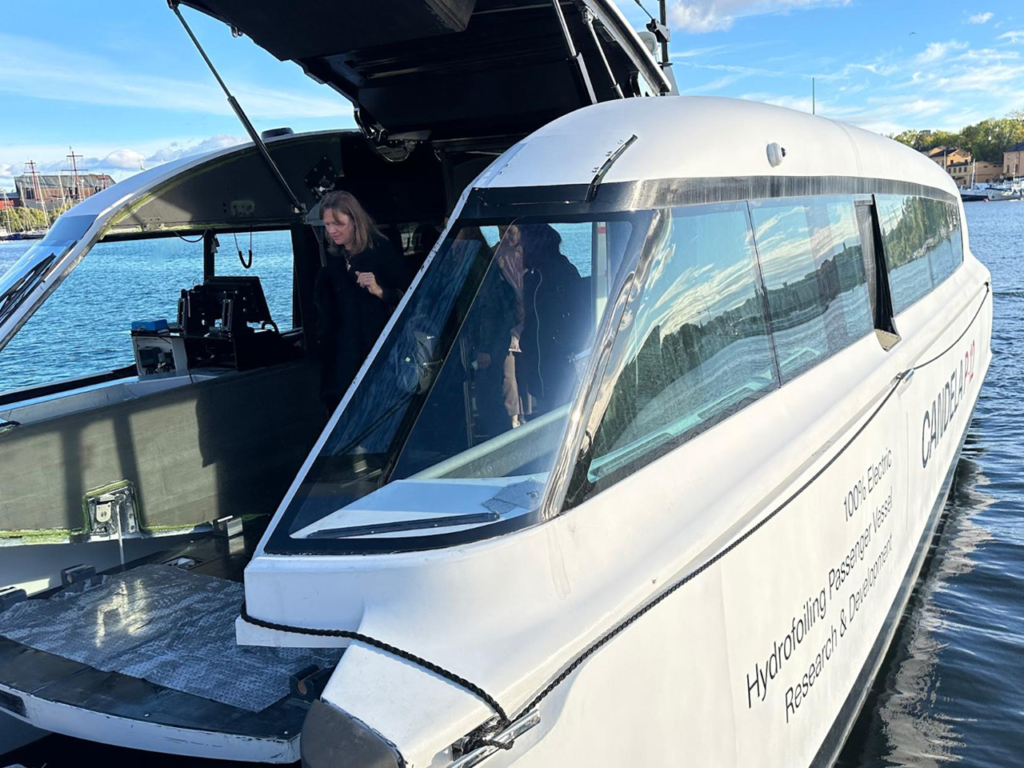Anne Arundel County, Maryland, is moving ahead with plans for an electric passenger ferry, armed with nearly $4 million in new federal funding. First destination is Stockholm, Sweden.
In late September, the county won funding for fiscal year 2024 from the Federal Transit Administration (FTA). The $3.895 million grant comes from FTA’s approximately $100 million electric or low-emission ferry pilot program.
The program requires ferries to use alternative fuels that reduce emissions or eliminate onboard emissions. Approved alternative fuels may include methanol, denatured ethanol, and other mixtures containing at least 85 percent alcohol. natural gas; liquefied petroleum; hydrogen; electricity; fuels derived from biological materials. Other fuels that provide “substantial energy security and environmental benefits,” according to the FTA.
Anne Arundel County’s FTA funds will be used to purchase an electric vessel to begin new ferry service between Annapolis, Baltimore City, and Matapeake Park on Kent Island. The service will serve commuters, residents and visitors and will use existing port facilities at all three locations.
In response to this funding award, a delegation from Annapolis and Anne Arundel counties traveled to Sweden. Ferries are used regularly in Sweden, where “clean” environmental practices are a top priority.
The Swedish training tour will last more than a week and will include state, county and city officials, including County Executive Stuart Pittman and Annapolis Mayor Gavin Buckley, a longtime supporter of local electric ferry service.
Sweden is home to Candela, a shipbuilding company that manufactures electric foil vessels, including a relatively new passenger ferry model. Candela debuted its small recreational powerboat, the Candela C-8, at the 2023 Annapolis Powerboat Show. They returned last weekend for the 2024 Powerboat Show, the week Maryland officials toured Candela’s manufacturing facility in Sweden.
In a letter to voters in Sweden, Anne Arundel County Executive Stuart Pittman said that the country is a sustainable and He spoke in detail about the impressive ways in which the initiative is being carried out. He learned that energy production in Sweden is 40% hydro, 29% nuclear, 21% wind, 8% CHP facilities from waste incineration, and 2% solar.
“We felt like we were visiting the future,” Pittman said.
For members of the Swedish research group, traveling by bicycle is more popular than traveling by car in Stockholm.
Indeed, Sweden is a world leader in sustainability efforts, with ambitious goals of net-zero emissions by 2045.
Pittman believes the local leaders’ visit will encourage them to do things like “invest in electric ferries, like the futuristic hydrofoil version we visited at the Candela factory.”
Sweden has been experimenting with electric ferries for more than a decade, launching its first full-scale service in 2014. Since then, the Swedish government has invested in expanding electric ferry solutions. On Maryland’s Sweden Study Tour, we were able to meet with experts and see these ferries in action.
The Maryland delegation toured the Candela Electric Foil Vessel under construction.
Anne Arundel County has not yet actively solicited bids for the ferry builder, but the county and the Annapolis mayor’s office have met with Candela multiple times. The company’s P-12 shuttles can accommodate 25 to 30 people, depending on the layout. It can cover the same distance in 25 minutes that a regular shuttle can cover in 55 minutes. In addition to using cleaner energy, Candela says its foiling technology creates almost no wake, reduces shoreline erosion and is much less grumpy for nearby yachters. Masu.
At the Power Boat Show, we spoke with Candela representatives who said they plan to build their third hull for Saudi Arabia by the end of October. The company has already received two orders in the United States and is working to establish manufacturing operations there. First deliveries in the U.S. will take at least 18 months to two years. The company hasn’t said exactly where these ferries will be delivered, but it’s receiving interest from both coasts.
Mr. Candela believes their vessel is a perfect fit for our region. They liken the Chesapeake Bay to an “inland sea” much like the Swedish archipelago. Although the bay is large, offshore conditions are not visible. Representatives from Candela said the bay was “underutilized from a traffic point of view” compared to Sweden. The company envisions a small fleet of 39-foot P-12s, with one ship constantly charging while on the move.
Still, decisions have not yet been made as to what type of ferry the county will invest in or who will build it. “The county has not prepared a procurement request or scope of work to procure the ferry, and it is too early for any manufacturer to consider it,” said Renesha Alfonso, a spokeswoman for the county executive’s office. I haven’t.”
The county’s initial ferry plan is part of a larger goal to bring passenger ferries to waterfront towns throughout Maryland on the Chesapeake Bay. In August, we reported the completion of a feasibility study for a recreational passenger ferry among five counties. These counties ferry passengers from popular bay ports like Annapolis and Baltimore to hard-to-reach towns like Crisfield and St. Mary’s City, boosting tourism and better connecting Bay Area communities. I have a vision.
However, a state-wide ferry system is still a long way off. The five-county Chesapeake Bay Passenger Ferry Alliance must conduct a “readiness assessment” and secure millions of dollars in funding.

